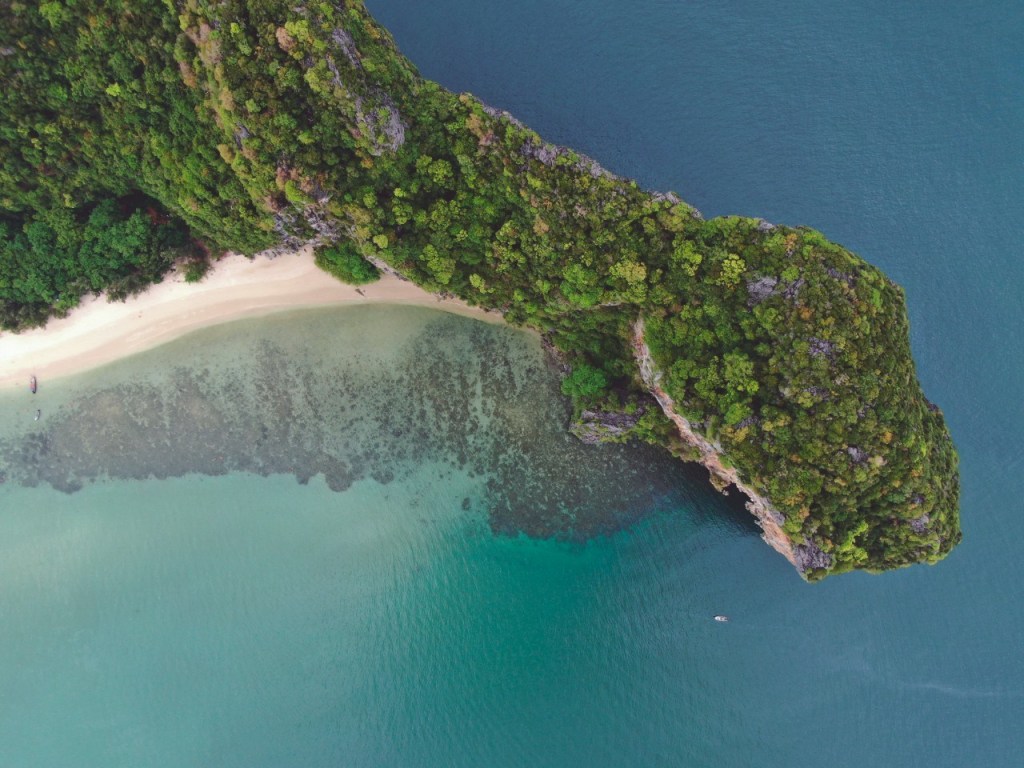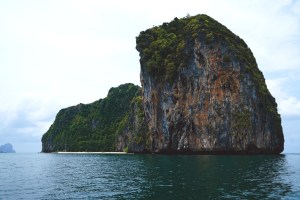Koh Libong & Koh Mook
Beyond the Shores of Trang Archipelago
Arriving at the small Trang airport, it’s easy to find a way to reach your preferred island. The car ride to the right pier is not long and a long tail boat will take you to one of these isles.
Koh Libong is the biggest island of the cluster and it’s famous for dugongs, a kind of rare sea cow. You can find them here because their habitat of shallow seagrass forest still flourishes. Up until some decades ago, local people used to eat them, but now they try to protect the remaining specimens by limiting boat access to the dugong observation area.


However, the chances of an encounter are quite rare. The right timing according to the tide and the dry season is advised, especially from November to March. We searched for them in the swamp water with the boat engine turned off, still to no avail.
The first thing that Koh Libong has to offer is certainly the wonderful white beaches. And with some spirit of adventure, you can get to know the local way of living. The majority of the very friendly population is Muslim who lives in a few fisherman villages by the sea and the forest.


We visited the Southern island of Koh Lao Liang, which belongs to Mu Koh Phetra National Park, on a fisherman’s longtail boat with his wife and young son. When he took us to the marvellous white sand beach with clear water, his wife was catching shellfish on the rocks on the opposite side of the island. The water there was very deep, dark and full of pink jellyfish bigger than my head. After a couple of hours, she filled the basket with shellfish and returned to the boat with a big smile, totally safe from nasty jellyfish stings.
Back on Koh Libong, the fisherman started foraging on the shore under the tree’s roots. He found ‘Hua Toy Yai’ (Hua Kloy Yai), a type of plumber the locals use to make flour. Once he collected a good amount, his wife peeled, mashed and sun-dried them for two days before declaring the flour was ready. It is usually cooked with coconut milk to make desserts or a kind of sweet coconut jelly or ‘Kanom Guan.’
Another great discovery for the palate was the water apple: perfectly rounded and green fruit that is soft and juicy inside. These are generally found in numerous street booths. People would harvest these fruits using long bamboo poles with a small net attached since the fruits are usually ripened high up in the trees.
There’s so much more to discover on the beautiful island other than trying to catch a glimpse of the beautiful dugongs in their natural habitats. However, the recent suspicious dugongs’ deaths caused some concern that the peaceful animals are being hunted for their hide. Obviously hunting endangered species like dugong is forbidden and the locals are doing all they can to help raise awareness and create a safe environment to co-exist with these marvellous animals.


The best thing we can do is to help create more sustainable tourism activities so that everyone, including the future generations, may enjoy the breathtaking nature and animals for years to come.
Koh Libong series by Utopic Food; all the episodes are available on Youtube: UTOPICFOOD!









Leave a Reply